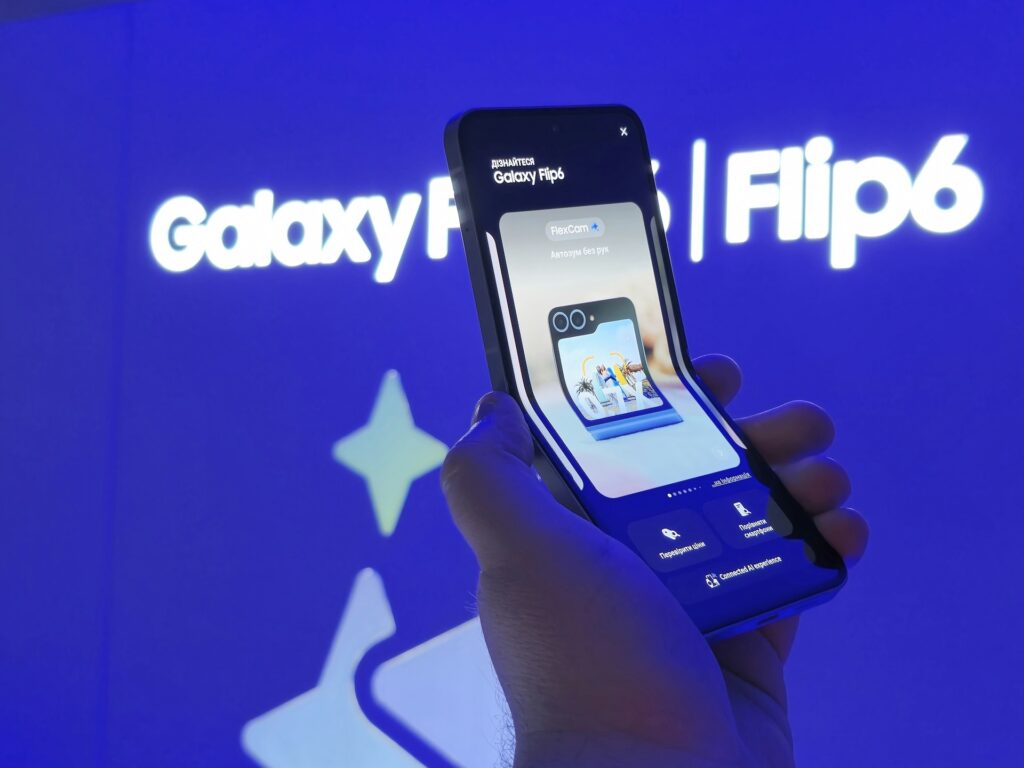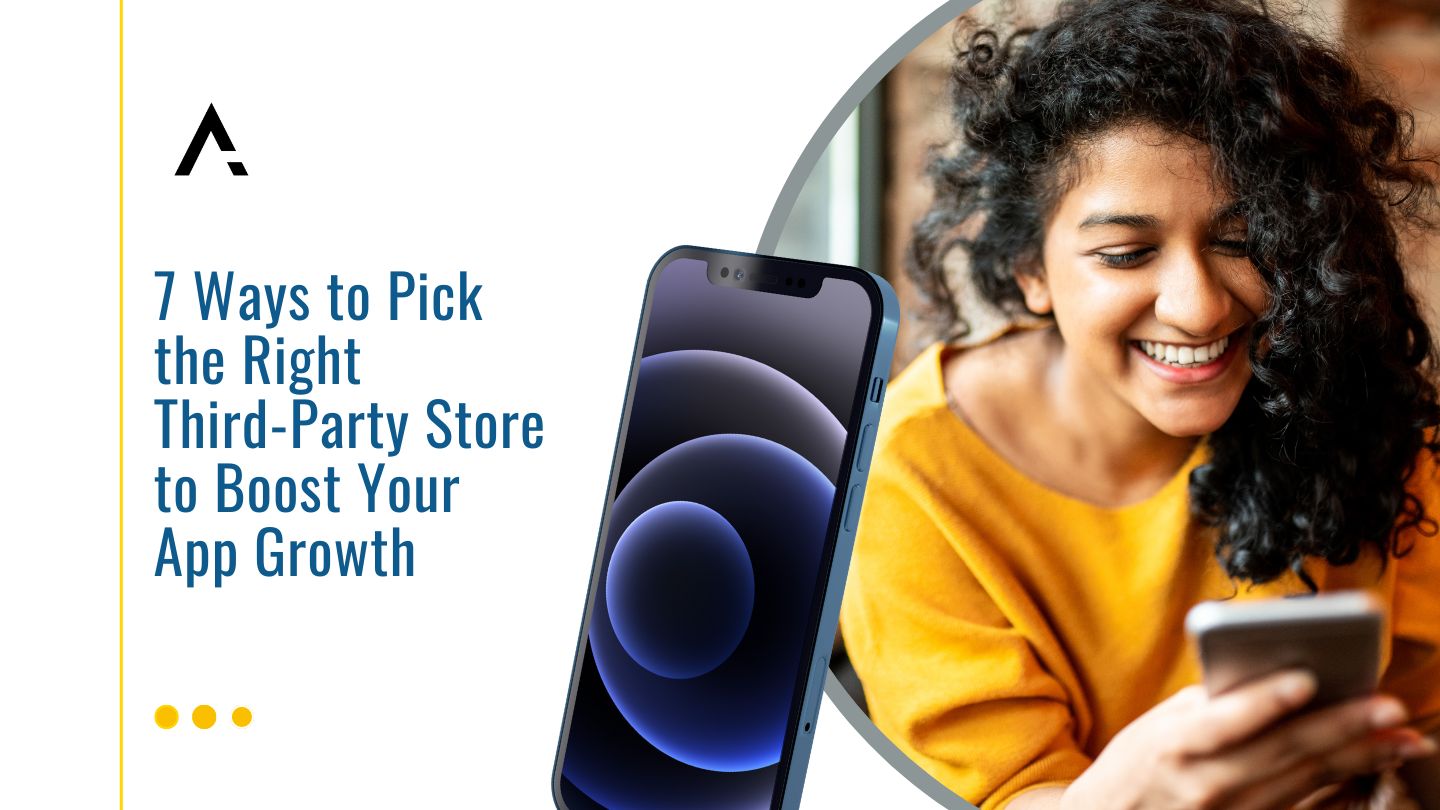Today, there are more than 300 app stores worldwide, and this number continues to increase. Opting for the ideal 3rd party app store can make all the difference to your app’s success. That’s a lot of people to target. As mobile marketing expands beyond Google Play and Apple App Store ecosystems, third-party stores provide many opportunities to capture untapped markets, reach new audiences, and increase downloads.
But which option do you pick to ensure maximum growth potential for your app? Here is our handy guide to assist you in selecting an ideal third-party app store to support your app’s development potential.
Tips to pick the right 3rd party app store
1. Understand your target audience
Understanding your target audience is the initial step in selecting the right 3rd party app store.
Each app has a distinct user base, while different app stores cater to particular demographics or regions. In the final quarter of 2023, there were approximately 580 million monthly active users worldwide on the Huawei AppGallery. That’s a lot of people to target. For example, if your app caters specifically to users in China where Google Play isn’t accessible, listing on local platforms like Huawei AppGallery, Tencent MyApp, or Xiaomi GetApps will increase engagement and downloads significantly.
Pro Tip: Conduct thorough user demographic research of third-party app stores. Note factors such as location, device type, and popular app categories to ensure they align with your audience’s needs before launching your app in those stores.
2. Evaluate market reach
A significant benefit of alternative app stores lies in their ability to gain entry to niche and regional markets overlooked by traditional platforms. However, not all third-party stores possess equal levels of market penetration. When you review various 3rd party app stores, consider those that cover areas where your app can thrive most successfully.
Aptoide and Samsung Galaxy Stores boast a strong presence in Latin America and South Asia. The Xiaomi App Store holds an 11% share in China’s Android app marketplace, which signifies that Xiaomi’s platform for app distribution accounts for a notable portion of the Android app ecosystem in China. Xiaomi launched its GetApps store in LATAM in mid-2023, further expanding its presence in the region. By targeting stores with significant exposure in your desired markets, you can target users actively searching for apps like yours.

Pro Tip: Use market analysis tools to assess each store’s download statistics and growth potential within your target regions.
3. Evaluate store policies and guidelines
Third-party app stores like Google Play and the Apple App Store have unique policies and guidelines for listing apps, from security to app quality requirements. Before submitting an app for consideration to any store, you should research its rules to avoid rejection, delays, or, worst case, delisting. Some stores allow faster listings, while others maintain stricter standards.
Huawei AppGallery stands out with its stringent security measures and is an ideal place for users to download apps securely. Other less well-known stores may provide less stringent protocols and could compromise your app’s reputation. So, make sure you choose an outlet that meets both quality and security expectations.
Pro Tip: Ensure your app meets the technical and security requirements set forth by the 3rd party app store to avoid potential hiccups during submission.
4. Analyze monetization opportunities
Monetization is pivotal when considering where and when to list an app. Different stores provide:
- Various monetization models.
- Ranging from in-app purchases and subscriptions to advertising-based revenue streams.
- Flexible monetization solutions tailored specifically to your business model.
Alternative app stores offer developers a more profitable revenue-sharing model than the typical 70/30 split offered by Apple and Google Play. Consider this crucial aspect before choosing an app store!
Amazon Appstore, for example, supports numerous payment options and tools, such as Amazon Coins, that encourage in-app spending. Other stores may focus on similar advertising revenues. Selecting the right alternative app store enables you to experiment with these various revenue-generating models to optimize your revenue potential.
Pro Tip: Before selecting an eCommerce store for sale, review their payment and revenue-sharing models to ensure they align with your monetization strategy.

5. Check for promotional opportunities
A frequently underutilized advantage of 3rd party app stores is their promotional support. Many app stores provide opportunities for apps to be featured or promoted within their platform, which can dramatically increase an app’s visibility and downloads.
Stores like Samsung’s Galaxy Store and Huawei AppGallery regularly feature apps in curated collections, promotional campaigns, or seasonal offerings. Thus, they create more exposure, potentially helping them gain traction for launching new apps. It is wise to research which third-party app stores offer such visibility before selecting one. Also, investigate their promotional programs and then decide whether or not they support new app launches when selecting your preferred store.
Pro Tip: Contact the app store’s developer relations team to inquire about possible promotional support or campaigns for your app.
6. Look for integration with other ecosystems
A key advantage of third-party app stores is their ability to integrate seamlessly with broader ecosystems. Many third-party stores specialize in specific devices or platforms, making seamless integration with hardware or software systems easy.
Samsung devices and the Galaxy Store are tightly interwoven, offering access to native apps such as Samsung Health or Pay. This intimate integration with their device ecosystem enhances user experience and can result in higher engagement levels among their user base.
Pro Tip: Select an app store that integrates seamlessly with the devices or platforms your app targets for an optimal user experience and to increase the application’s adoption rates.
7. Consider developer support and resources
It is vitally essential when publishing an app through third-party stores that you receive adequate developer support in the form of forums, guides and development tools for app distribution. Some platforms provide robust assistance through forums, guides, and development tools, while other stores do not.
When looking for stores to distribute through, be wary of those app stores that are not offering enough assistance. Look for ones offering comprehensive developer resources such as APIs and SDK analytics that help your app achieve maximum success.
Huawei AppGallery provides developers with exceptional support, such as a developer center, marketing tools, and advanced analytics. This kind of assistance can significantly impact an app’s success and growth.

Photo by Evgeny Opanasenko on Unsplash
Pro Tip: Focus your search efforts on stores offering robust developer support services. These app stores will speed up the app submission process and help address potential issues more quickly.
Conclusion
Selecting the ideal 3rd party app store is crucial to app growth. Focusing on your target audience, evaluating market reach, understanding store policies, capitalizing on monetization opportunities, seeking promotional support services from developers, and integrating within broader ecosystems can ensure maximum app success and growth.
Do not leave your app’s growth potential unexploited. Make the most of its full potential with the appropriate 3rd party app store today. Explore the top alternative app stores available, and start on your path toward app success today by discovering top third-party stores!
Are you ready to elevate your app to the next level? Unlock new markets, increase downloads, and kick-start its growth through alternative app store advertising using our services! Discover how AVOW can assist you in optimizing mobile OEM advertising strategies so you can boost your app growth. Contact us now and learn more!
Want to unlock the full blueprint of why using third party app stores is beneficial? Discover all the secrets in our Third Party App Stores: A Developer’s Comprehensive Guide!
About the Author







